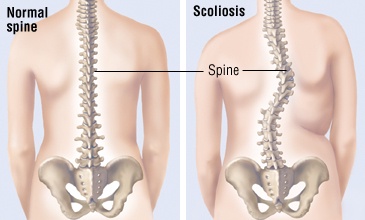Introduction
Scoliosis is a spinal condition that affects millions of people worldwide, causing abnormal curvature of the spine. Although scoliosis can develop at any age, it most commonly emerges during childhood or adolescence. Recognizing the signs and symptoms of scoliosis is crucial for early detection and intervention, as timely treatment can help prevent the progression of the curvature and mitigate potential complications. This article aims to provide a comprehensive overview of scoliosis symptoms, shedding light on the various manifestations and their impact on individuals' lives.
- Structural Symptoms
Structural symptoms refer to the visible and measurable physical changes that occur in individuals with scoliosis. One of the most evident signs is the abnormal curvature of the spine, which may manifest as an "S" or "C" shape when viewed from behind. This asymmetry can cause one shoulder blade to protrude more than the other, resulting in uneven shoulders. In addition, the individual's hips may appear uneven, with one side higher than the other. As scoliosis progresses, the spine's rotation may become more pronounced, leading to a noticeable rib hump on one side of the back.
- Functional Symptoms
Apart from the structural changes, scoliosis can also lead to various functional symptoms that affect an individual's daily life. These symptoms primarily arise from the abnormal spinal curvature interfering with the normal functioning of the musculoskeletal system. As a result, individuals with scoliosis may experience muscular imbalances and stiffness, which can lead to back pain and discomfort. The pain may worsen with prolonged sitting or standing, physical activity, or during periods of growth spurts in adolescents. Functional symptoms can also impact lung function, as the abnormal curvature may restrict the expansion of the chest, leading to reduced respiratory efficiency.
- Psychological and Emotional Impact
The physical manifestations of scoliosis can have a significant psychological and emotional impact on affected individuals, particularly during adolescence when body image and self-esteem are highly sensitive. The noticeable asymmetry and changes in posture may lead to self-consciousness and feelings of embarrassment or insecurity. Moreover, scoliosis-related pain and functional limitations can interfere with participation in physical activities, affecting social interactions and overall quality of life. It is essential to address these psychological and emotional aspects of scoliosis alongside the physical symptoms to provide comprehensive care and support to individuals living with the condition.
- When to Seek Medical Attention
If you or your child exhibit any signs or symptoms of scoliosis, it is important to consult a healthcare professional for a thorough evaluation. Early detection is crucial, as it allows for timely intervention and management options. During a medical examination, the healthcare provider will assess the curvature of the spine, conduct a physical examination, and may order imaging tests such as X-rays to determine the severity and progression of scoliosis accurately.
Conclusion
Recognizing the signs and symptoms of scoliosis is essential for early detection, proper diagnosis, and effective management of the condition. Structural symptoms, functional impairments, and psychological effects can all contribute to the overall impact of scoliosis on an individual's well-being. By promptly seeking medical attention and receiving appropriate treatment, individuals with scoliosis can lead fulfilling lives and minimize the potential complications associated with the condition. Education and awareness about scoliosis symptoms are vital to ensure that affected individuals receive the support and care they need for optimal health and quality of life.


No comments yet